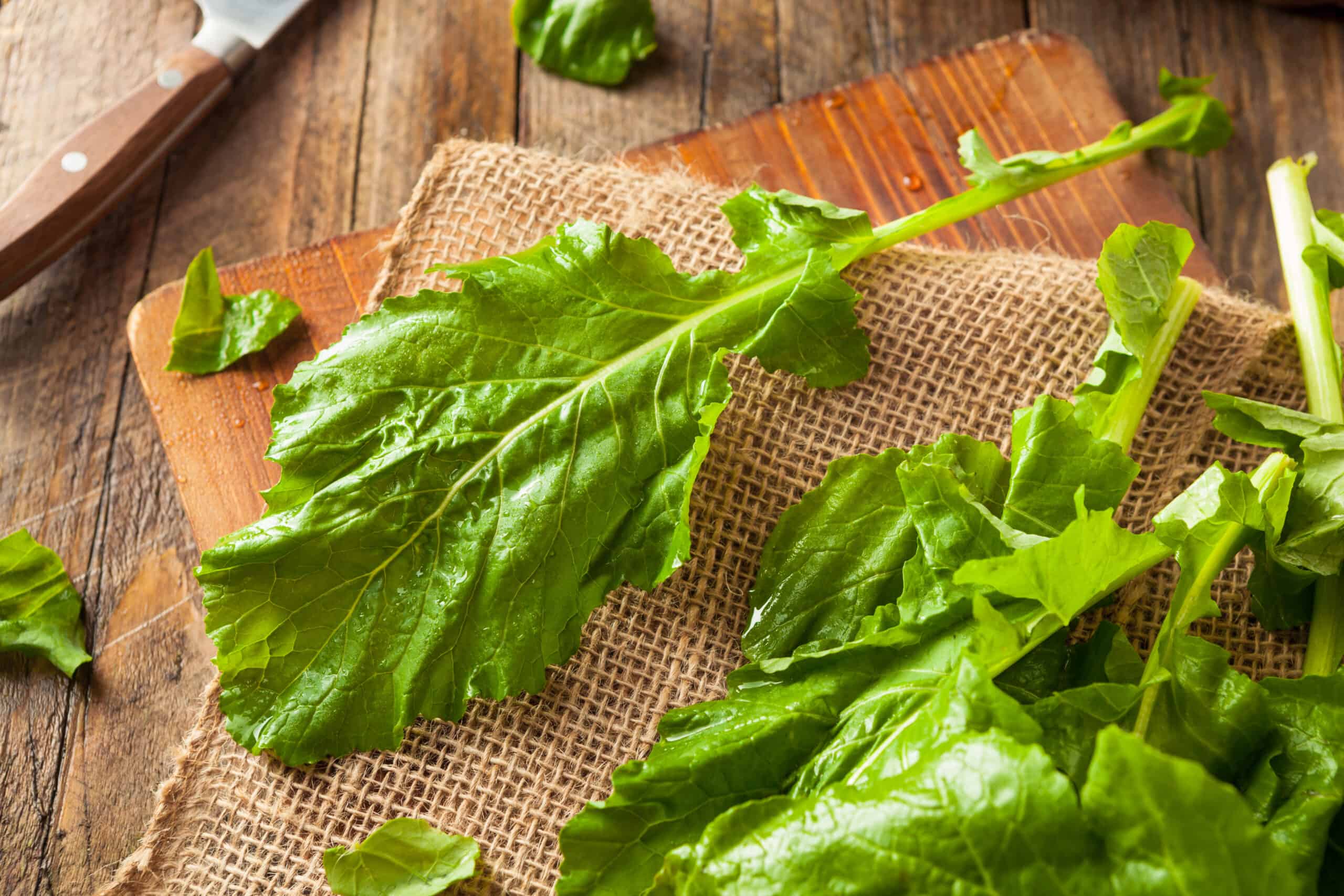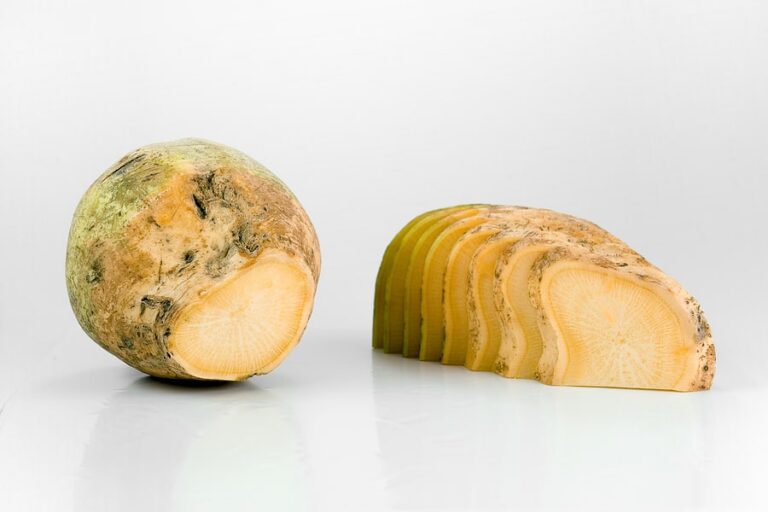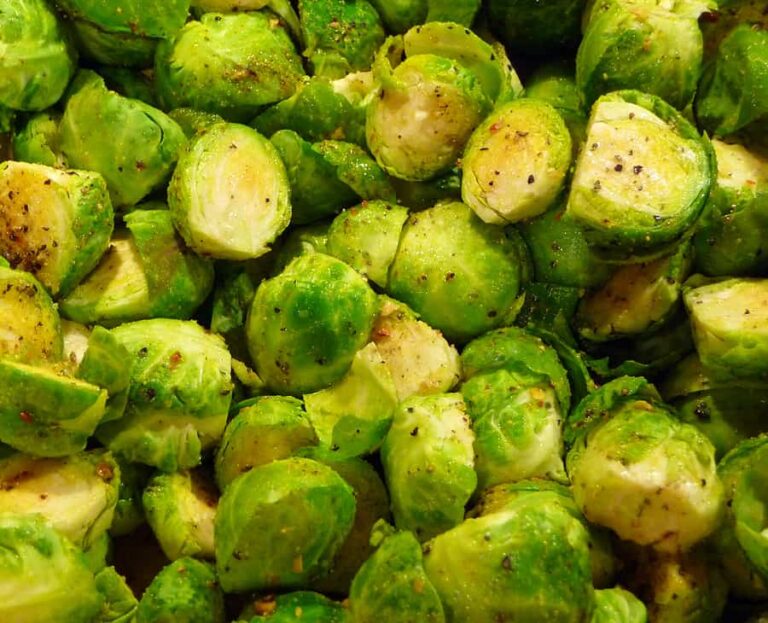Three Ways to Cook Turnip Greens
Turnip greens can be steamed, sautéed, boiled, and prepared much like spinach.
The tenderest of turnip greens are those harvested before the swollen root we call a turnip ever develops. Young greens will have the least bite.
Grow turnip greens for harvest in the cool time of the year, in early spring and autumn.
- Also of interest:
How to Grow Turnips - How to Harvest and Store Turnips
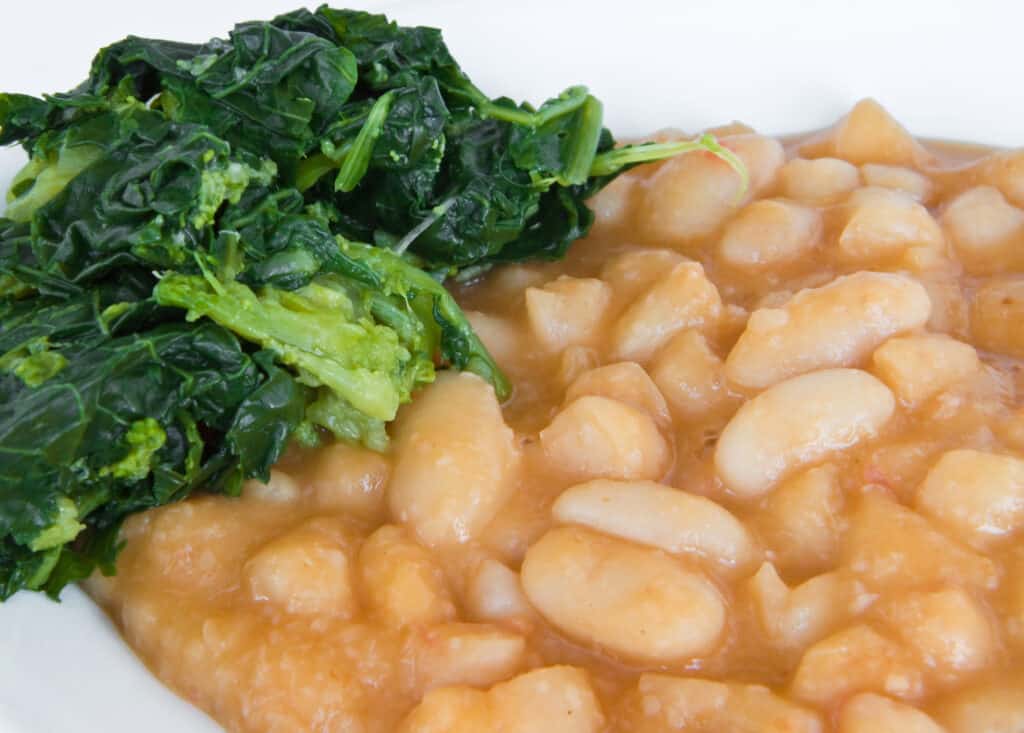
How to choose turnip greens
- Select fresh turnip greens that are plump and crisp and have a rich green color.
- Avoid greens that are yellow, thick or fibrous, pitted or flabby.
Kitchen Helpers from Amazon:
- Oster Vegetable Steamer
- Chef’s Knives Set of 6
- EZ Off Jar Opener for Weak Hands
- Pepper Core Remover Stainless Steel
- Kitchen Utensils – Set of 35
How to store turnips greens
- Refrigerate turnip greens in a tightly sealed plastic bag for up to 5 days.
- Store them unwashed until you are ready to use them.
- Turnip greens can be frozen like spinach.
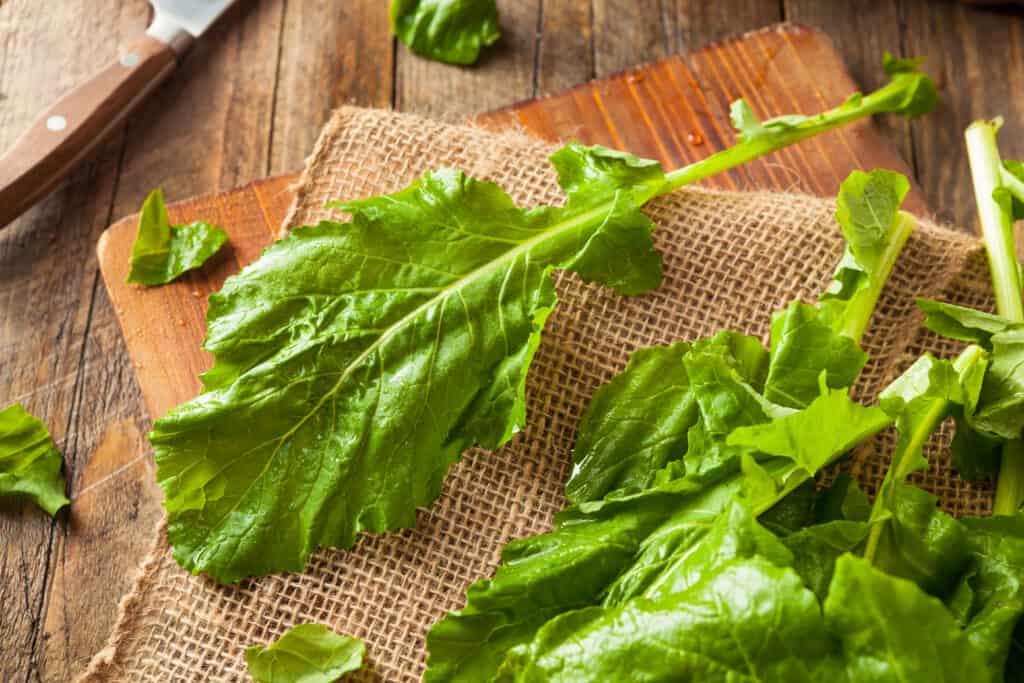
How to prep turnip greens
- Wash greens just before using them in a large bowl of lukewarm water in order to dislodge sand and dirt. Then cut off or strip out and discard the stems.
- Remove the stems by folding the leaves in half and ripping out the stems.
- Don’t dry the greens before cooking. The residual water will help them wilt as they cook.

turniatoes garlic and turnip greens
No products found.
How to serve turnip greens raw
- Use young, tender turnip leaves in a salad alone or mixed with other greens. They dress well with a little olive oil and vinegar.
Turnip greens cooking suggestions
- The best turnip greens for cooking are going to be 12 inches (30cm) long or shorter and come from turnips that are 2 to 3 inches (5-7.5 cm) in diameter.
- Turnips greens can be prepared much like spinach. They look a bit like mustard greens but with a purplish tint.
- Turnip greens are not as biting as mustard greens; they have a mellower turnip flavor. (However, turnips, turnip greens, and mustard all come from the same peppery-tasting mustard family.)
- Steam or wilt turnips greens in just the water that clings to them after washing.
- Sauté them in olive oil and a dash of chopped garlic and serve them as a tangy side dish.
- Turnip greens are mostly water so they will shrink when they are cooked. Two large bunches will serve as a side dish for four people.
- Stew turnip greens for a least 1 hour in just enough liquid to cover them. Flavor the liquid with salt pork, cooking oil, butter, or margarine. Serve the resulting broth—which is called “pot likker”—with the greens over cornbread.
- Turnips greens can be cooked with a little bacon fat. After cooking, sprinkle them with bacon bits and enjoy a real Southern meal.
How to steam turnip greens
- Wash the turnips greens and arrange them so that all the stems are going in the same direction.
- Place a steam basket in a pot with an inch or two of water; the basket should not touch the water.
- Bring the water to a boil and set the greens in the basket.
- Steam the turnips greens for 2 to 4 minutes.
- Arrange the greens on a serving dish, spoon melted butter over the greens, and serve with lemon wedges.
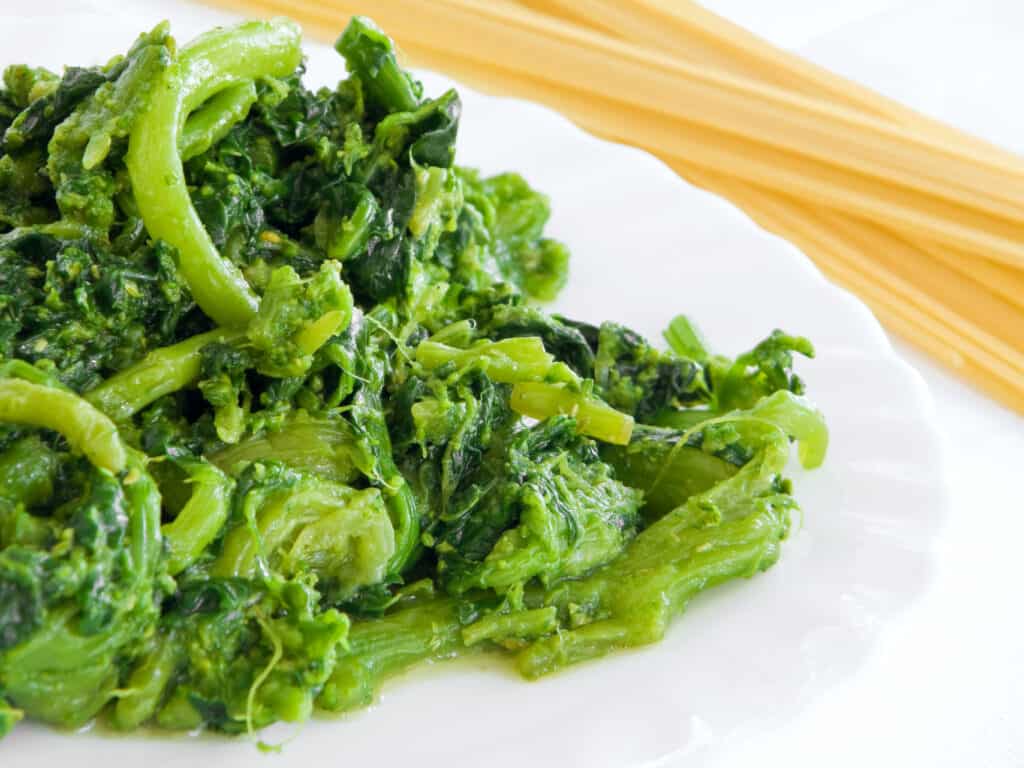
How to boil turnip greens
- Remove stems that are thicker than ¼ inch and wash well.
- Coarsely chop the stems and leaves.
- Bring a large pot of lightly salted water to a boil.
- Cook until the stems are tender and easily pierced with the tip of a sharp knife about 5 to 15 minutes
- Drain and serve immediately or plunge into ice water and drain to reheat later.
- Serve hot with butter, olive oil, or vinegar and a spritz of lemon.
How to sauté turnip greens
- Remove stems that are thicker than ¼ inch and wash well.
- Coarsely chop the stems and leaves.
- Heat a skillet or wok over high heat.
- Add a few tablespoons of olive or peanut oil.
- Add the greens and a bit of minced garlic and cook over high heat stirring constantly until the greens wilt, about 3 to 6 minutes depending on the heat.
- Season with salt and pepper and add lemon juice or vinegar to taste.
- Serve hot.
Turnip greens flavor partners
- Turnip greens have an affinity for aged grating cheese, bacon, corn, cornbread, curry, garlic, ham, hot sauce, lemon, onion, salt pork, smoked turkey, and vinegar.
- Season turnips greens with salt, pepper, onion, garlic, basil, dill, mace nutmeg, allspice, mustard, parsley, sage, rosemary, or thyme.
- Avoid cooking greens in aluminum or iron pots as they will turn black in contact with these metals.
Turnip greens nutrition
- Turnip greens are an excellent source of vitamins A, B, and C, potassium, and magnesium.
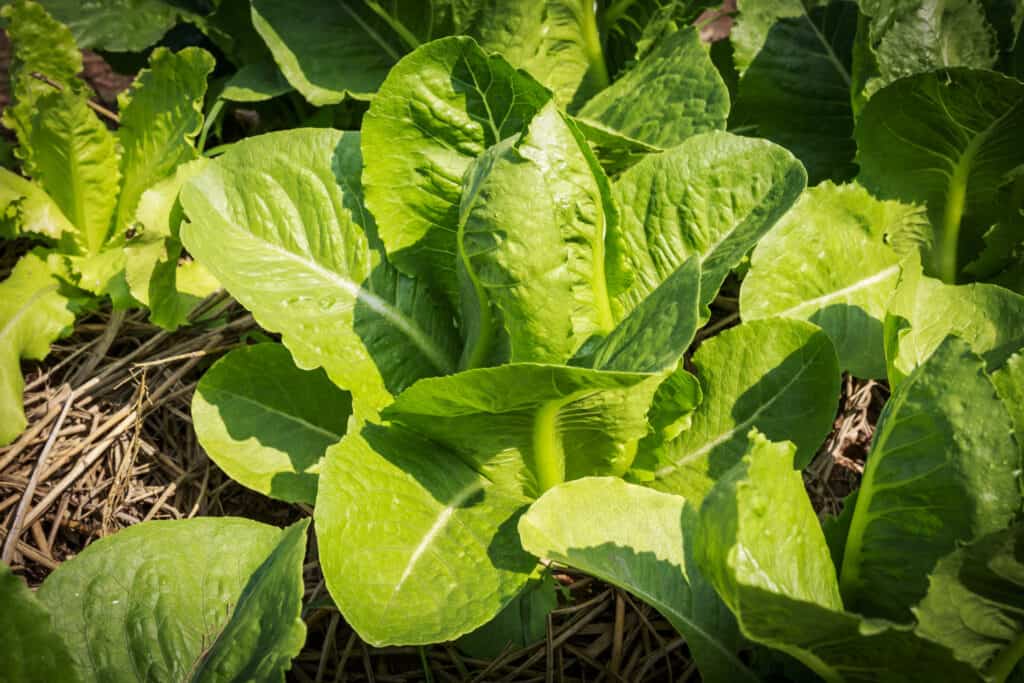
Get to know turnip greens
- The best turnip greens for cooking are going to be 12 inches (30cm) long or shorter and come from turnips that are 2 to 3 inches (5-7.5 cm) in diameter.
- Turnips (and their attached greens) got their start in Northern Europe more than 4,000 years ago. The cultivated turnip made its way to China and Japan from Europe and has been a staple in those countries and in India for almost 1,500 years.
- The first turnip planted in the Americas was planted in Virginia in about 1609. Turnip greens that were discarded from plantation house kitchens became a common meal (cooked with pork parts) for enslaved American blacks. The turnip green became a staple of “soul” food and has enjoyed a culinary comeback with the rise of interest in regional cuisine.
The botanical name for the turnip is Brassica rapa var. rapa.
Turnip articles on Harvest to Table:
How to Harvest and Store Turnips
Eight Ways to Cook and Serve Turnips
Three Ways to Cook Turnip Greens
Turnip, Rutabaga, and Kohlrabi Growing Problems Troubleshooting
Articles of interest:
Best Herbs for Container Growing
Garden Planning Books at Amazon:
- Vegetable Garden Almanac & Planner
- Kitchen Garden Grower’s Guide Vegetable Encyclopedia
- Vegetable Garden Grower’s Guide
- Tomato Grower’s Answer Book
More kitchen tips:
Bring your harvest to the table. Kitchen prep tips and easy recipes for the vegetables you grow. Click below for vegetable prep and recipes you can use now.
- Almonds
- Apples
- Apricot
- Aprium
- Artichoke
- Arugula
- Asparagus
- Avocado
- Bamboo Shoots
- Banana
- Basil
- Beans, Dried
- Beans. Long
- Beans, Shell
- Beans, Snap
- Beets
- Bitter Melon
- Blackberry
- Bok Choy
- Broccoli
- Broccoli Raab
- Brussels Sprouts
- Cabbage
- Cardoon
- Carrots
- Cauliflower
- Celeriac
- Celery
- Chard
- Chayote Squash
- Cherimoya
- Cherries
- Chestnut
- Chickpea
- Chinese Cabbage
- Chives
- Cilantro
- Citron
- Clementine
- Collards
- Coriander
- Corn, Sweet
- Corn, Baby
- Corn Salad, Mache
- Cranberry
- Cress
- Cucumber
- Daikon
- Dandelion
- Dill
- Eggplant
- Endive, Belgian
- Endive and Escarole
- Fava Beans
- Fig
- Florence Fennel
- Garlic
- Ginger
- Grapefruit
- Grapes
- Guava
- Horseradish
- Jerusalem Artichoke
- Jicama
- Jujube
- Kale
- Kiwifruit
- Kohlrabi
- Kumquat
- Leeks
- Lemongrass
- Lemons
- Lettuce
- Lime
- Mache (Corn Salad)
- Mandarin Orange
- Mango
- Maple Syrup
- Marjoram
- Melons
- Michihili
- Mint
- Mizuna
- Mushrooms
- Mushrooms, Cremini
- Mustard Greens
- Napa Cabbage
- Nectarine
- Okra
- Olives
- Olive oil
- Onions
- Oranges
- Oregano
- Parsley
- Parsley Root
- Parsnips
- Passion Fruit
- Pawpaw
- Peaches
- Pears
- Peas, Garden Snap
- Peas, Snow
- Pei Tsai
- Peppers, Chili
- Peppers, Sweet
- Persimmon
- Pineapple
- Pineapple Guava
- Plantain
- Plums
- Pluots
- Pomegranate
- Potatoes
- Prickly Pear
- Pumpkin
- Quince
- Radicchio
- Radishes
- Raspberries
- Rosemary
- Rhubarb
- Rutabaga
- Sage
- Salsify
- Sauerkraut
- Savory
- Shallots
- Sorrel
- Spinach
- Squash, Summer
- Squash, Winter
- Strawberries
- Sunchokes
- Sunflower
- Sweet Potato
- Swiss Chard
- Tangerine
- Taro
- Tarragon
- Thyme
- Tomatillo
- Tomato
- Turnip
- Turnip Greens
- Yams

